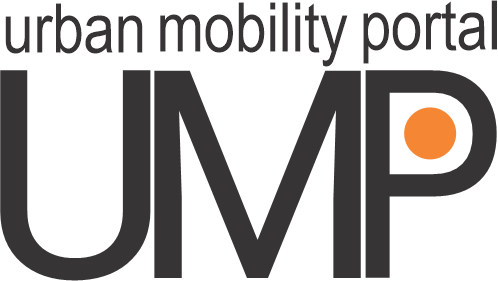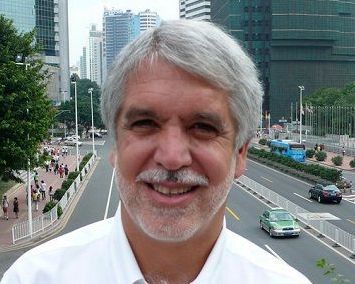
Improving urban mobility requires multilevel governance and cooperation between local authorities to establish regulatory and financial frameworks that respond to the needs and circumstances of the local and urban communities. Multilevel governance has a vertical and horizontal dimension. The vertical dimension refers to the relationship between higher and lower levels of government and the horizontal dimension refers to the cooperation arrangements between regions or among municipalities. Governance structures among municipalities will vary by context and can be an informal cooperation or arranged formally, in inter-municipal structures or super-municipal structures. The preparation of Urban Mobility Plans and projects implies time and resources at the local level. Municipalities typically finance this from their own budget. The development and implementation of urban mobility improvements can be greatly supported with the availability of national financial frameworks, which can support the initiation of mobility plans and the implementation of improvement measures and projects. In situations where spatial planning and urban mobility planning are the responsibilities of different line ministries or local government departments, it is critical to ensure that there is a governance framework that will ensure the integration of these highly interdependent planning processes.
n
Leadership
Successful Urban Mobility Planning is often associated with strong political leadership that addresses the challenges of mobility and connectivity in a comprehensive, integrated, cross-sectorial manner, as can be seen from the examples below.
Bogotá | Enrique Peñalosa | 1997-2001 and 2016-2019
Peñalosa was elected Mayor of Bogotá in 1997 and he initiated sustainable mobility and urban development policies that have inspired cities worldwide. These include the TransMilenio BRT system (one of the world’s most heavily used systems), the recuperation of parks and public spaces, over 350 km of protected bikeways, a 17 km pedestrian and bike-only street and policies restricting car use and street parking.
Copenhagen | Jens Kramer Mikkelsen | 1989-2004
Since his appointment as Mayor of Copenhagen in February 1989, Jens Kramer Mikkelsen has invested more than 100 million euros in better bicycle infrastructure with more than 435 kilometers of bike lanes, bridges, and bicycle highways. Cycling has become an efficient way of creating better space, clear air, less noise, and providing healthy citizens with a high quality of life. Over 60% of Copenhageners bike to work or school.
Curitiba | Jaime Lerner | 1971–1974, 1979–1983 and 1989–19928
Jaime Lerner placed Curitiba, Brazil on the map as a leading global example of urban sustainability. Throughout his three terms as Mayor of Curitiba, he and his team designed an innovative master plan which integrated land use with sustainable transport, introduced bus rapid transit (BRT) and introduced the concept of mass transit corridors. This has inspired innovations around the city and in cities around the globe.
London | Ken Livingstone | 2000-2008
Ken Livingstone became the first Mayor of London after the creation of the Greater London Authority in 2000. He transformed the future of urban mobility in London by introducing the congestion charging scheme and the Oyster card (a smart ticketing system) as well as pedestrianizing public spaces, improving bus services, redeveloping transit hubs, and much more. His legacy has undeniably influenced cities worldwide.
Seoul | Myung Bak Lee | 2002-2006
Under the leadership of Mayor Myung Bak Lee, a four-mile elevated highway that once covered a river in the city centre was replaced with a riverfront park, high quality walkways, and public squares. Exclusive median bus lanes were installed on 36 miles of congested streets and there has been a shift from a car-oriented to a pedestrian-friendly city. Significant reductions in congestion, air pollution, and fuel consumption have followed.
n
Metropolitan Areas
Metropolitan areas cover multiple jurisdictions and are increasingly the subject of sustainable urban mobility strategies and plans. Mobility is often the generator of spatial development within metropolitan areas and the reason for defining metropolitan areas. In the European Union, metropolitan regions (also known as functional urban areas) are based on the extent of a commuting zone. When 15 percent of employed persons living in one area work in another area, the two areas are treated as a single metropolitan region. In the United States, the Census Bureau defines the spatial scope of Metropolitan Statistical Areas according to the degree of social and economic integration caused by commuting and measured by journey to work data from the census. Defining metropolitan areas is relatively easy but governing them and their mobility systems is not at all as easy. Very few metropolitan areas have managed to establish comprehensive urban mobility governance systems that are capable of effective management. Most are limited to transit authorities which operate public transport services but have no role in the development or operation of the road network or other critical mobility services such as traffic management, traffic calming, spatial development, etc. City-regions with a metropolitan tier of governance in place tend to have higher per capita GDP, and they also perform better in areas such as public transport provision and controlling urban sprawl. Examples of metropolitan areas with urban mobility governance systems are provided below.
Barcelona
The Àrea Metropolitana de Barcelona (Metropolitan Area of Barcelona) is a metropolitan authority composed of representatives of the city of Barcelona and 36 adjacent municipalities within an area of 636 km2 and with a population over 5 million. The Metropolitan Council is the highest governing body of the AMB. Its responsibilities include the appointment and dismissal of the AMB presidency; the approval of the Metropolitan Action Plan, which includes projects and services developed by the AMB; the approval of laws and regulations, as well as the establishment of metropolitan service fees. A Governing Board assists the president in the everyday work of the metropolitan administration. The AMB is responsible for developing the Metropolitan Area Strategic Plan, the Metropolitan Action Plan, the Metropolitan Urban Master Plan and the Metropolitan Urban Mobility Plan. The mayor of Barcelona has customarily served as the president of AMB which ensures collaboration between the city and the metropolitan agency.
Sustainable Urban Mobility
The Vicepresidència de l'Àrea de Mobilitat, Transport i Sostenibilitat (Vice Presidency for Mobility, Transport and Sustainablity) is responsible for planning and managing most aspects of Barcelona's transport system. The services are run by sector franchisees and by licensees. The main transport operator is the public company Transports Metropolitans de Barcelona (TMB) which provides metro and bus services and there are eight companies that provide bus services within the metropolitan area. AMB provides funding to help local municipalities develop Urban Mobility Plans. Although these are approved by the Province, they must conform with the Metropolitan Urban Mobility Plan. Local mobility plans should improve environmental quality in the metropolitan area of Barcelona, increase mobility in public transport and non-motorized modes and decrease the negative effects caused by the use of private vehicles.
Services
AMB Urban Mobility services include:
- Public transport services, including the metro (except trams).
- Regulation of the taxi service.
- Approval of the Urban Mobility Metropolitan Plan.
- Definition of the basic metropolitan road network.
- Participation in traffic management in this network, together with the Catalan Government.
- Planning and management of tourist and cultural transport services, delegated by town councils.
- Promotion of sustainable transport (414 kms of cycle routes, 6,000 shared bikes and 300 E-bikes and a 95 km2 Low Emission Zone).
- Management of the Barcelona ring roads
London
The Greater London Authority (GLA) is a strategic metropolitan authority with powers over transport, policing, economic development, and fire and emergency planning. It is governed by an elected 25-member London Assembly and an elected Mayor. It is responsible for the strategic administration of Greater London (population 9.7 million) and it provide funding to the 33 local councils (known as Boroughs) to deliver safe, integrated, efficient and economic transport within London. The GLA does not directly provide any services as these are carried out by agencies which work under the policy direction of the Mayor and Assembly.
Transport for London (TfL) is the agency that is responsible for planning and managing most aspects of London's transport system. TfL's role is a strategic planner rather than an operator. As a result, TfL is able to comprehensively plan and manage urban mobility improvement measures within the strategic road network, local streets and the public transport system in an integrated manner. TfL plans and manages the network, while the services are run through wholly owned subsidiary companies (principally London Underground), by private sector franchisees (the remaining rail services, trams and most buses) and by licensees (some buses, taxis and river services). Even though TfL does not run the services, TfL branding is used on all concessions and worn by staff to present an integrated and recognisable network to passengers.
Services
TfL services include:
- All public transport systems (London Underground, London Buses, Docklands Light Railway, London Overground, TfL Rail, London Trams, London River Services, London Dial-aRide, Victoria Coach Station, Santander Cycles and the Emirates Air Line cable car);
- The 580 km strategic road network (including street lighting and signs, carriageways, footways, drainage, plus more than 900 structures including 13 tunnels);
- Traffic management (including 6,300 traffic signals, strategic bus priority measures and 2,000 km of cycle routes);
- Healthy Streets for London;
- The Congestion Charge; and
- Low Emission Zones.
- Ownership of 3,000 properties including the Tube and bus stations and associated buildings.
In line with the approach taken by the EU in the definition of metropolitan regions based on commuting zones, TfL intends to include public transport routes terminating outside the GLA boundary in neighbouring counties of Kent and Surrey, southeast of Greater London.
Management
TfL is controlled by a board chaired by the Mayor who appoints the board members. A key to TfL’s success is having a vocal and charismatic Mayor to champion the transport agenda and secure political and financial support for it. As a directly elected, executive mayor, London’s incumbent holds significant power. He has both the mandate and authority to realise his vision for the city’s transport. Without it, policies such as the congestion charging scheme in central London may not have been implemented. The Commissioner of Transport for London reports to the Board and leads a management team with individual functional responsibilities.
Budget
In 2019–20, TfL had a budget of £10.3 billion, 47% of which came from fares. The rest came from grants, mainly from the GLA (33%), borrowing (8%), congestion charging and other income (12%). The widespread use of an integrated and contactless fare payment system has meant that TfL is now one of Europe's largest contactless merchants.
Stuttgart
The Verband Region Stuttgart (VRS) is a strategic metropolitan authority with powers over tegional planning, local public transport, regional transport planning, landscape planning, business and tourism development and certain aspects of waste management. It is governed by an elected 86-member Assembly. It is responsible for the strategic administration of the Stuttgart Metropolitan (population 2.7 million) comprising 179 Municipalities.
Mobility
The VRS develops common strategies with transport authorities and municipalities. It provides information on the state of infrastructure (e.g. construction sites), on traffic performance and coordinates traffic management systems. It ensures the efficient use of infrastructure, emission reductions and accessibility. It manages a €15 million programme designed to improve sustainable transport with car-pools, car-sharing, E-Mobility, charging infrastructure, driverless vehicles, joint Bike / Bus concepts (including bike sharing and “pedelecs”) and developing easier “smart cards” payment systems for public transport. It is encouraging transit-oriented development and coordinating the integration of spatial developing (residential, industrial areas) with transport planning of specific sites and corridors.
Management
The Verband Region Stuttgart Assembly is led by a Chairman and delegates are elected every five years by the local population. The VRS administration is led by a full-time Regional Director with a staff of about 70 employees.
Budget
The biggest item in the €300 million budget of the Verband Region Stuttgart is transport. It funds important parts of the local public transport system, expanding the commuter rail network and to a small extent also operation of the commuter rail services.






